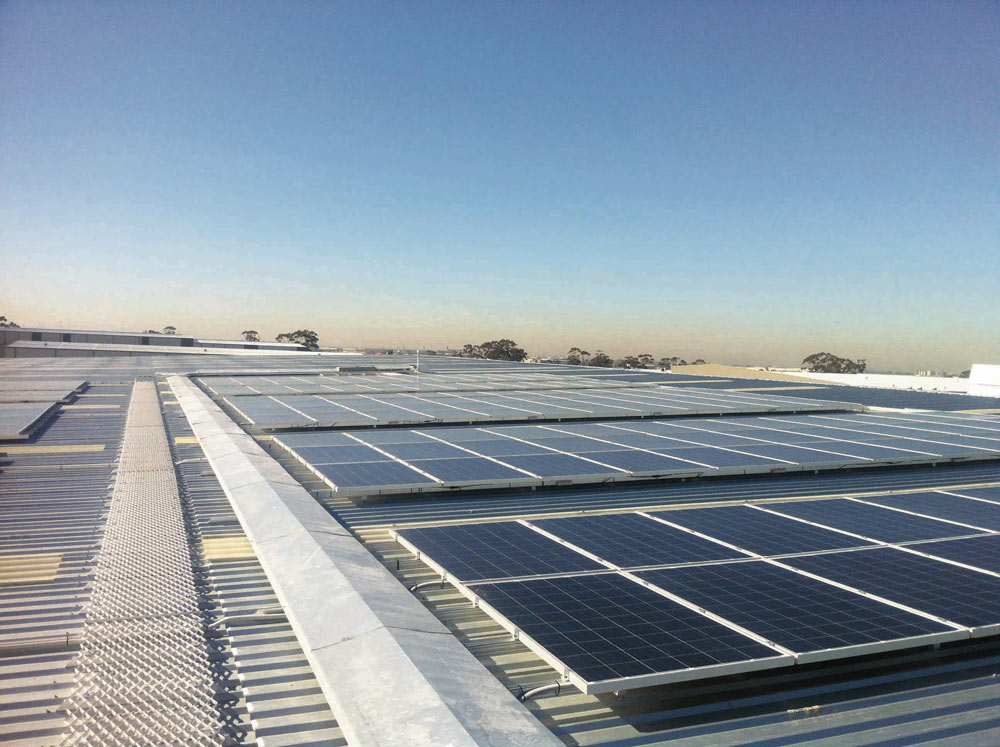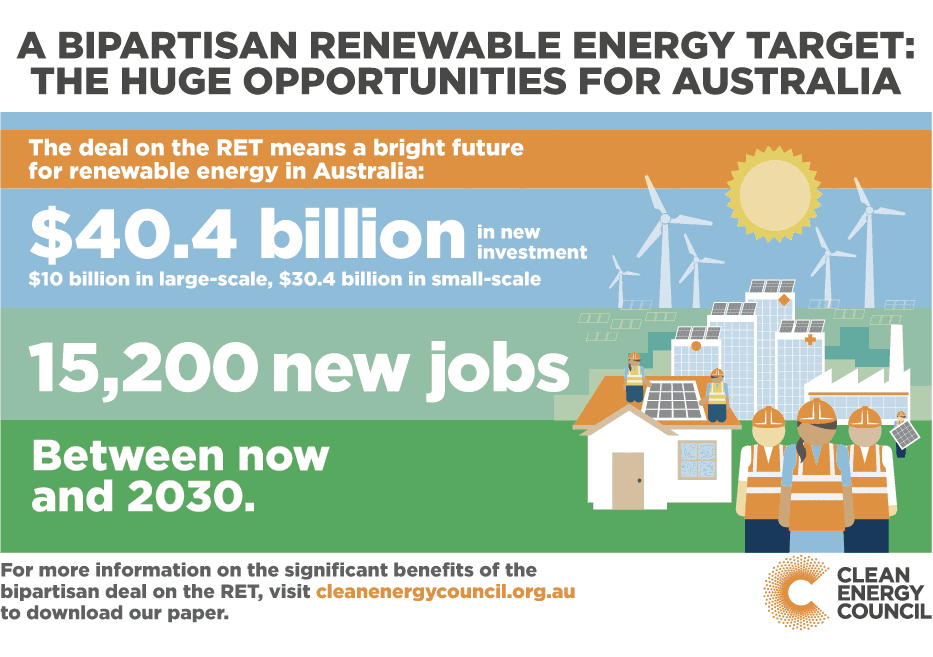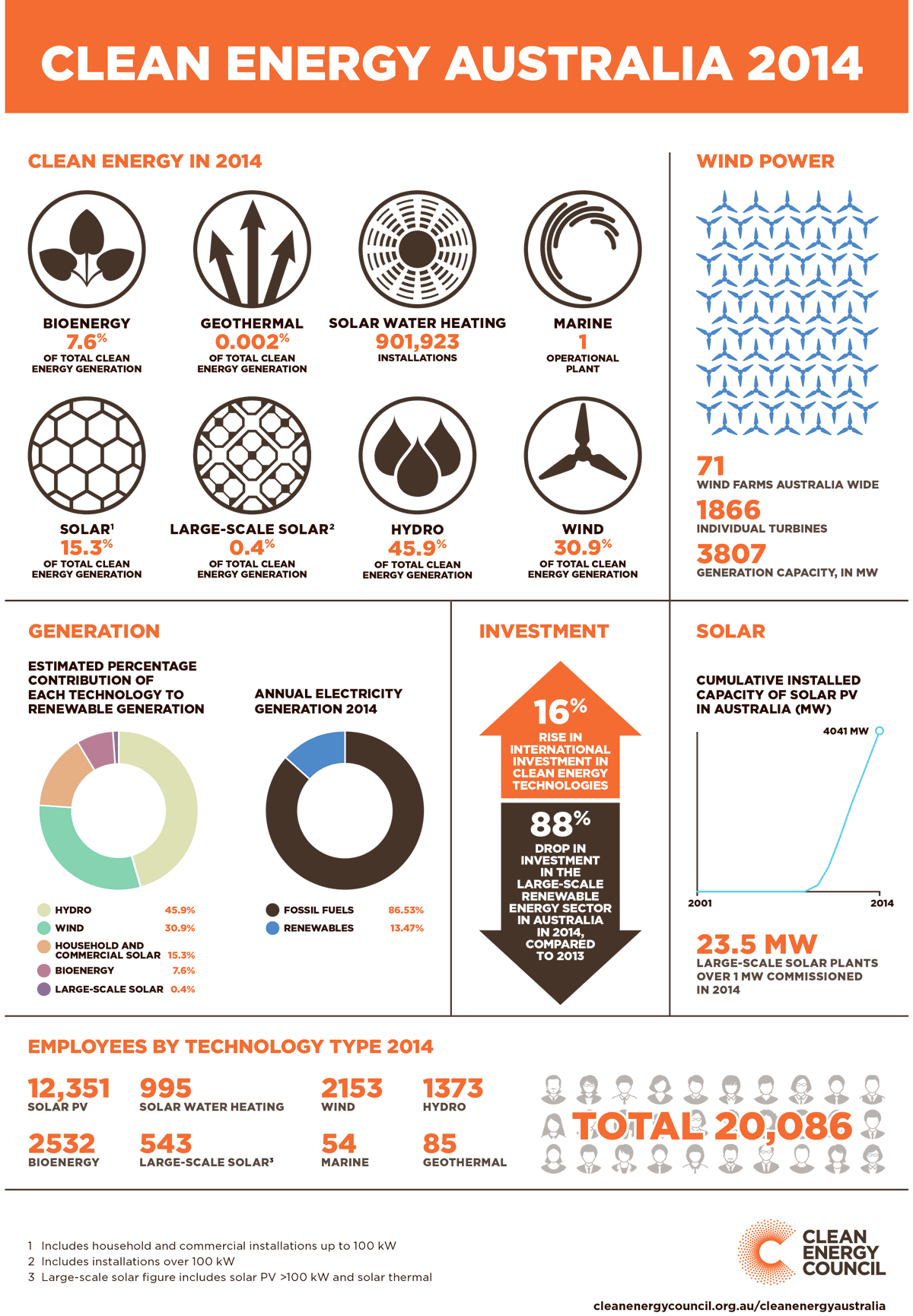How Australia’s solar energy companies are powering up
In a country renowned for its abundant sunshine, it’s not surprising that so many Australian households and businesses have already turned to solar energy as their source of power.

TONY KAYE
In a country renowned for its abundant sunshine, it’s not surprising that so many Australian households and businesses have already turned to solar energy as their source of power.
At the heart has been increased consumer engagement and awareness about electricity prices and the benefits of solar technology, leading to more households and businesses installing either rooftop solar photovoltaic (PV) systems or solar hot water.
According to the latest statistics available from the Clean Energy Council, the peak body for clean energy generation in Australia, at the end of 2014 there were 1.4 million solar power systems installed nationally. In addition, there was also close to one million solar hot water systems.
Bundaberg in Queensland was Australia’s solar capital in 2014, followed by Mandurah in Western Australia and Hervey Bay, just over 100 kilometres from Bundaberg.
At that point in time, solar energy accounted for 15.3 per cent of Australia’s total clean energy generation and accounted for a not insignificant 4000 megawatts of cumulative installed capacity across the country.
Rapid changes in the solar industry, including the roll-out of new technologies and products, are fuelling further growth. In particular, more and more businesses are waking up to the major financial benefits that can be achieved from reduced energy costs by having large-scale solar installations at their operations.
In the commercial sphere, large and small enterprises are warming to solar. And that’s good news for the industry as a whole
There’s also strong growth in the construction of sizeable solar power utility plants, which are able to generate additional renewable energy capacity for the national grid.
Furthermore, the costs of solar energy on the domestic level are also changing quickly. New residential product offerings are making solar power more attractive and affordable for homeowners over the longer term. And the price mathematics will only get better, because advancements in battery storage technologies are already completely changing the usage dynamics for solar energy in the home.
The solar power play
In a thriving sector, it stands to reason that the number of participants in the Australian solar industry at almost every level is continuing to expand.
From small-scale operators importing and installing solar panels for houses to the larger energy utilities involved in big solar installation projects and also commercial power generation, Australia’s solar landscape is becoming increasingly competitive. That, of course, can only be good news for consumers as products and services increase, and prices come down.
In the commercial sphere, large and small enterprises are warming to solar. And that’s good news for the industry as a whole, especially for larger players including energy producer, generator and retailer Origin Energy, and SunEdison, the world’s largest global renewable energy company which helped to invent the silicon that now run all solar panels and modern computers.
Both are expanding aggressively across the commercial and residential segments, with Origin broadening the scale of its offerings and SunEdison – a pioneer in the commercial solar sector – facilitating the largest commercial solar installation in Australia to date in 2014.

Origin’s General Manager, Solar & Emerging Businesses, Philip Mackey, says he expects that about 800 megawatts of commercial rooftop solar PV will be installed this year, which would equate to approximately 25 per cent of all the total solar PV being installed throughout Australia.
At the commercial level, Origin is actively installing a number of larger scale solar PV systems for businesses. The company recently completed installation on a 263kW solar PV system at the Royal Mint in Canberra, and is averaging approximately half a megawatt per month of solar installations for small – medium sized businesses per month.
Meanwhile, SunEdison Australia is also making good inroads into commercial solar. Its recent commercial project wins include a 400 kilowatt system installed under Melbourne’s Bolte Bridge for IT company NextDC. In December 2015, SunEdison also completed the largest private rooftop solar installation in Australia, a 1.25 megawatt installation at Casuarina Square in Darwin on behalf of the listed property group GPT.
And SunEdison also recently completed a major roll-out on behalf of multinational healthcare group BUPA for 65 aged care facilities around Australia. The company’s former co-founder and currently Head of Commercial and Industrial Sales at SunEdison, Nick Brass, says that BUPA has been able to achieve the equivalent of 8000 tonnes of carbon offsets per annum.
“BUPA is very focused on reducing its carbon impact around Australia. This will result in a 25 per cent energy reduction from the grid as a result of that installation. We are now managing those systems for BUPA under a performance contract over the next two years.”
Other recent new systems include a $1.3 million solar power system installed at Mars Confectionery in Ballarat, Victoria by Conergy. Swedish furniture giant IKEA announced in 2014 that it would install 3.9 megawatts of solar power across its east coast stores and warehouses in partnership with Canadian Solar and Kingspan. AGL is another large player in both residential and commercial solar.
Elsewhere, Origin is involved in developing large-scale utility solar plants, including a 100 megawatt facility co-located with an existing power plant the group operates in Darling Downs, Queensland.
At the same time, SunEdison also imports and distributes solar equipment to hundreds of other solar companies.
“This ensures we have the volume and scale to offer some of the most competitive prices in the industry,” Brass says. “In addition, we employ a 100-plus solar-only dedicated team (one of the largest in Australia), with some of the most experienced engineers and installers in the nation.
Residential solar continues to grow
The residential segment is continuing to gain momentum. Origin is selling approximately 1 megawatt of residential solar PV every month. SunEdison is one of the longer-standing residential solar companies in Australia, celebrating 10 years in the residential solar business.
“Australia’s residential solar revolution has seen many companies fall by the wayside, but SunEdison continues to power on after a decade of operations and after more than 23,000 systems installed,” Brass says.
A new product offering from Origin is also making the cost factor extremely enticing. Origin’s Solar as a Service is a Power Purchase Agreement (PPA) where Origin owns, monitors and maintains the system on the customer’s roof so there is no cost to the customer for purchasing the system. Customers enter into a long term contract to purchase the solar generated power at a much lower cost than the energy grid, and this means that they can start saving on their energy bills from day one.
Mackey says another big growth area is the repair of solar units, because typically they will require some level of repair within five to 10 years.
“It’s a big opportunity and an important service. That’s because 70 per cent of the solar installation businesses that have been in operation have failed, so a plethora of people have bought systems from companies that no longer exist.”
For $199, Origin has recently launched a service in Brisbane and Sydney where they can visit a residential site and undertake minor repairs.
Battery advances supercharge the opportunities
Major advances in lithium battery storage technology through the likes of American automotive and energy storage company Tesla, Korea’s LG and Japan’s Sony, are revolutionising the solar energy business globally.
While solar panels create energy, the full benefits are only really achieved when it is used straight away. But used in conjunction with batteries able to store the power that is generated the benefits of solar generation become much more cost effective.
“The value proposition from rooftop solar is much stronger if you use all the power,” Mackey says. “It’s early days but we expect to see a very rapid price reduction. If you look at solar systems over the past 14 years, the prices have fallen by about 90 per cent. We expect battery prices to fall by 50-60 per cent through to 2020.”
Brass agrees that batteries are becoming a game changer in the solar sector.
“We are seeing a strong trends towards interest in batteries. The commercial sector will adopt batteries to reduce peak power needs from the grid, and they will also be readily adopted in residential. SunEdison is in a great position to deliver innovative solutions in the sector, being one of the few Tesla Energy Authorised Resellers in Australia.”
Brass says the high cost of batteries currently mean they have a longer payback at the moment, but that will change in the same way the price of solar units has dropped sharply over time. “It hasn’t quite hit its sweet spot, but it’s all moving very quickly.”
He says another major change underway is the increasing integration of energy with telecommunications, whereby companies can use sophisticated technologies to manage their energy load.
“Telstra and other companies are very interested in this and have got their eye on that marketplace. It’s about using information and data sharing to deliver power at the lowest cost.”
Commercial sector buys into the solar story
Mackey says while the residential segment remains strong, businesses are an even better fit for solar energy because typically they are open during daylight hours and can therefore maximise the usage of the power during this time.
In addition, he says because smaller businesses are generally on a higher tariff than bigger ones, having solar energy at a lower rate is very attractive.
One recent example was a supermarket business in regional NSW which expects to be able to save $100,000 over the next 10 years as a result of entering into a solar PPA. Origin is currently installing around 20 to 30 installations per month for small-medium enterprises.
Has Australia missed the manufacturing boat?
In terms of solar manufacturing, China is and will remain the dominant global player. But both Mackey and Brass believe there are some opportunities here on a small scale.
The chief executive of the Clean Energy Council, Kane Thornton, adds that the support and innovative finance solutions provided by the Australian Renewable Energy Agency and the Clean Energy Finance Corporation are helping the next generation of local innovators get their technology out of the laboratory and into the power supply.
“I think we’ve missed the boat on making solar panels in a significant way because, in terms of mass market applications, the Chinese have effectively taken over and it’s very hard to compete on that level,” Brass says. “But Australia has a part to play in terms of the smarts, and we have an excellent track record in world-leading technologies through the likes of CSIRO and other organisations.”
Mackey says that while Australia has a big and vibrant solar industry, we are still small players on the global stage.
“For some of the bulky equipment, fabricating close to usage will save on costs,” he says.



comments